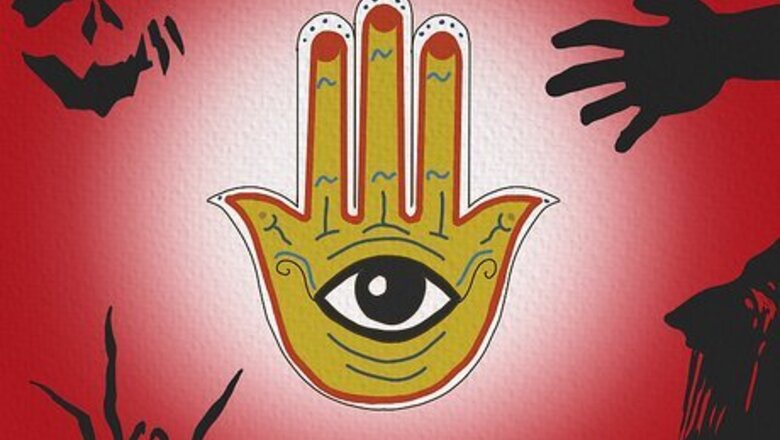
views
- The hamsa hand is believed to protect you against the evil eye and negativity. It’s also a good luck charm that’s thought to bring you prosperity and good health.
- In Judaism, the hamsa represents the 5 books of the Torah and acts as a reminder to praise God. In Islam, it represents the 5 Pillars and the 5 daily prayers.
- Wear or hang the hamsa hand face up to help strengthen its protective properties. Or, choose hamsa jewelry or tapestries that face down to increase your good luck.
Meaning and Origins of the Hamsa Hand
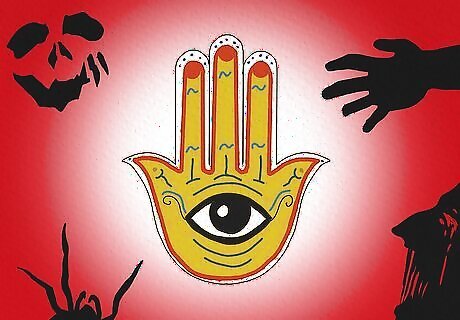
The hamsa hand is believed to protect you against evil. The hamsa hand is usually depicted as an open palm with 3 fingers extending in the middle and 2 symmetrical thumbs on either side. It typically has an eye in the center that is thought to protect you against the evil eye, or the ancient belief that malicious glares bring you misfortune. When you wear the hamsa as jewelry or hang it in your home, it can help ward off negativity and bad luck. Some hamsa hands contain other symbols on the palm, like a fish or the Star of David, that are thought to repel the evil eye. The hamsa hand is not always symmetrical and is sometimes depicted with a thumb and pinkie. The inside of the palm can be plain, colorful, or decorated with swirling patterns. Some hamsa hands are also inscribed with holy words or prayers.
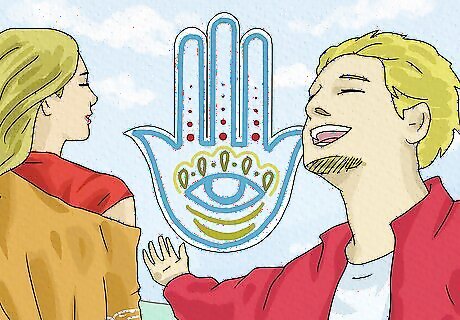
The hamsa hand is also a symbol of good fortune. This ancient talisman also doubles as a lucky charm. The protection the hamsa hand provides you is believed to bring you happiness, prosperity, and good health. Simply wearing it as jewelry or displaying it in your house is thought to increase your blessings, success, and strength. When the hamsa hand is depicted with the fingers close together, it’s used primarily for good luck. If the fingers of the hamsa are spread apart, it’s more of a protective talisman.
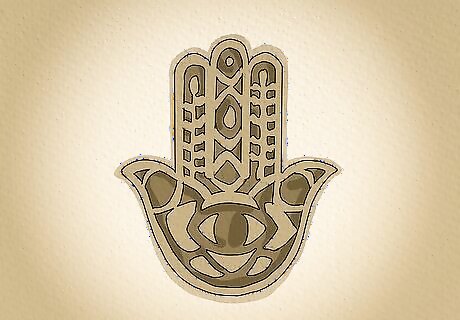
The first instances of the hamsa hand date back to 1500 BCE. The hamsa hand actually predates Islam and Judaism, which are the religions it’s most associated with. This symbol got its start in the ancient civilizations of Phoenicia and Mesopotamia. While the Phoenicians and Mesopotamians worshiped a different goddess, they both depicted her as an open palm. Her hand became a protective talisman, which other cultures and religions slowly adopted as their own. The Phoenicians mostly worshiped their goddess Tanit in the ancient city of Carthage, which is located in modern-day Tunisia. The Mesopotamians worshiped either the goddess Ishtar or Inanna and lived in present-day Iraq. Because the hamsa hand is important to many different religions, it’s also seen as a symbol of peace and unification. The hamsa hand is often referred to as the khamsa, hamesh, or chamsa hand.
Religious Symbolism of the Hamsa Hand
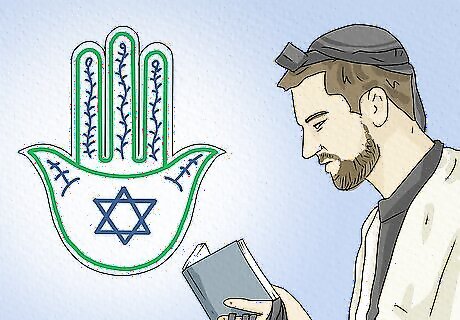
In Judaism, the hamsa, or Hand of Miriam, is a reminder to praise God. Hamsa comes from the Hebrew word hamesh, which means “the number 5.” The number 5 is very significant in Judaism, which is symbolized by the 5 fingers of the hamsa. To many Jews, the fingers represent the 5 books of the Torah, or the Hebrew Bible. This acts as a reminder of God’s presence and a sign to praise Him using all of your 5 senses. Hamsa is also closely related to the fifth letter in the Hebrew alphabet, Heh, which is also another name for God. The hamsa hand is associated with femininity, which is why it’s called the Hand of Miriam in Jewish cultures. Miriam was the sister of Moses and Aaron. The hamsa is also related to prayers like the Birkat HaBayit (Blessing for the Home), the Tefilat HaDerech (Traveler's Prayer), and the Shema. These are often inscribed into the hand.
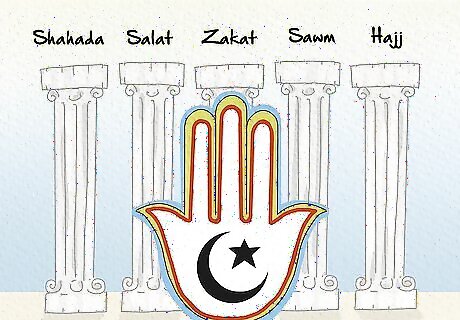
In Islam, the hamsa, or Hand of Fatima, symbolizes the 5 Pillars. The number 5 is also significant in Islam, as the hamsa hand comes from the Arabic word khamsah meaning “5.” The fingers on the hamsa represent the 5 Pillars of Islam for Sunni Muslims, which guide them in their worship of Allah or God. It also represents the 5 daily prayers that connect Muslims to each other and Allah. Fatima is the daughter of the Prophet Muhammad, who was God’s messenger and the founder of Islam. For Shiite Muslims, the hamsa represent the 5 People of the Cloak or Veil. These are members of the Prophet Muhammad’s family (Ahl al-Bayt): Muhammad, Fatima, Ali, Hussain, and Hassan. The 5 Pillars of Islam are Shahada (declaration of faith), Salat (prayer), Zakat (charity), Sawm (fasting), and Hajj (pilgrimage to Mecca).
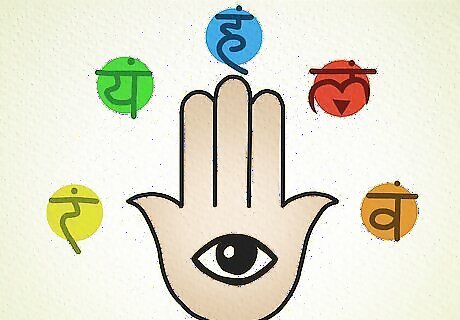
In Hinduism and Buddhism, the hamsa represents the 5 chakras. Hands are important symbols in these Eastern religions, as they are the tools you use to heal and connect with your spirituality. The hamsa hand corresponds to the 5 major chakras, or energy centers in our bodies. The 5 fingers on the hand also represent the 5 elements of nature that make up all things. The hamsa’s fingers correspond to the following chakras and elements: Thumb: solar plexus chakra and fire (Agni) Index finger: heart chakra and air (Vaayu) Middle finger: throat chakra and space/ether (Akasa) Ring finger: root chakra and earth (Prithvi) Pinkie finger: sacral chakra and water (Apas) The hamsa is also related to mudras, or hand movements that are symbolic in Hinduism and Buddhism. It forms the abhaya mudra, which is when the palm faces up and represents protection, or the varada mudra, which is when the palm faces down and symbolizes granting boons or wishes.
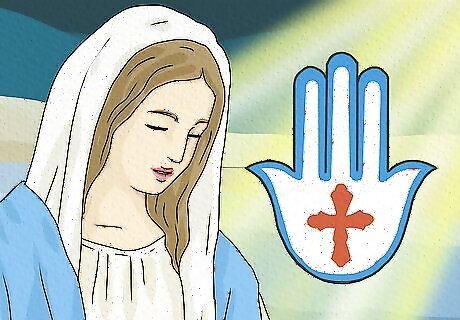
For Levantine Christians, the hamsa symbolizes the Hand of Mary. The hamsa hand is less common in Christianity, as many Christians prefer to wear and use other religious symbols like the cross. Among Levantine Christians, the hamsa represents the Hand of the Virgin Mary, or the mother of Jesus, who acts as a protective feminine figure. The hamsa hand is also regarded of as the Hand of God and a reminder of His existence.
What does it mean when you wear the hamsa hand facing up vs down?
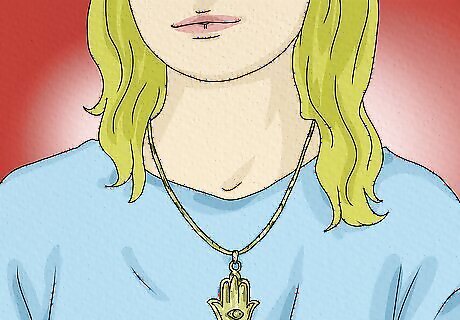
Wearing or displaying a hamsa hand facing up can protect you from evil. When the fingers of the hamsa extend upwards, it’s believed to have a stronger ability to ward off negativity and the evil eye. It’s also thought to protect you from your own negative thoughts, keeping you calm and happy. Hamsa hands are great to wear as jewelry, like necklaces or earrings, to receive daily protection. Or, hang a hamsa talisman or tapestry on your front door to keep evil at bay. In the Middle East, it’s traditional to use the hamsa this way. If you’re into tattoos, getting the hamsa hand tattooed on your body is a permanent way to feel its protection and repel evil. The hamsa hand is a part of many cultures and religions, so it’s okay for anyone to wear it. Just make sure you understand and respect its symbolism and significance.
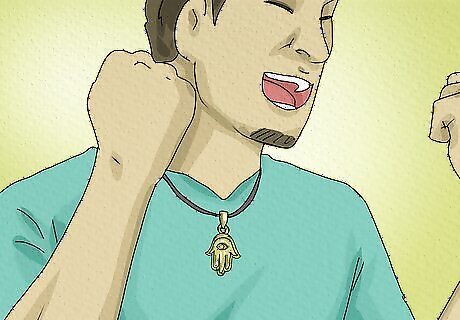
Wearing or using a hamsa hand face down might improve your luck. The hamsa hand is thought to bring good fortune when the fingers extend downwards. When you wear it this way, you might find that prosperity and success keeps coming your way. This orientation is also believed to help answer your prayers, which makes it great to wear when you need extra help and guidance. Wearing the hamsa face down on a necklace, ring, or bracelet is a great way to feel its good luck. Or, place a hamsa charm on your car’s rear view mirror or hang it up in your bedroom window. This can make your space more positive. Hamsa hands are often embroidered in clothes too, so wear a hamsa shirt to amplify your good luck when you need it.










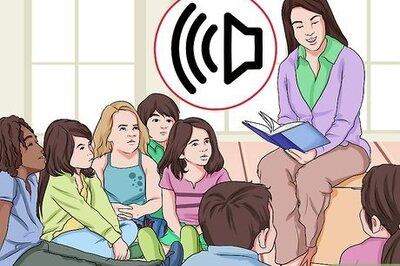
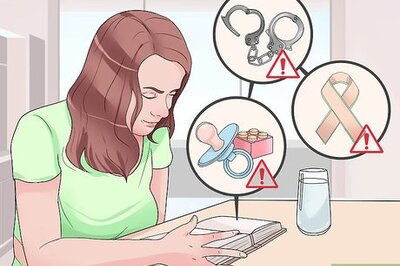






Comments
0 comment